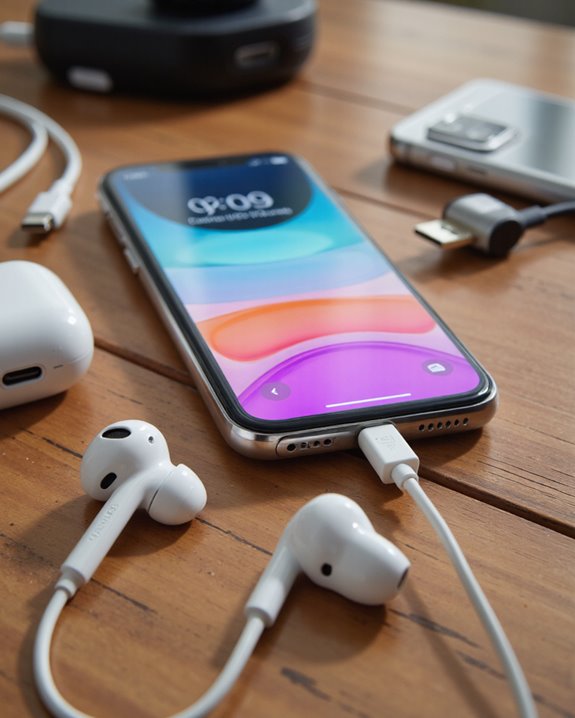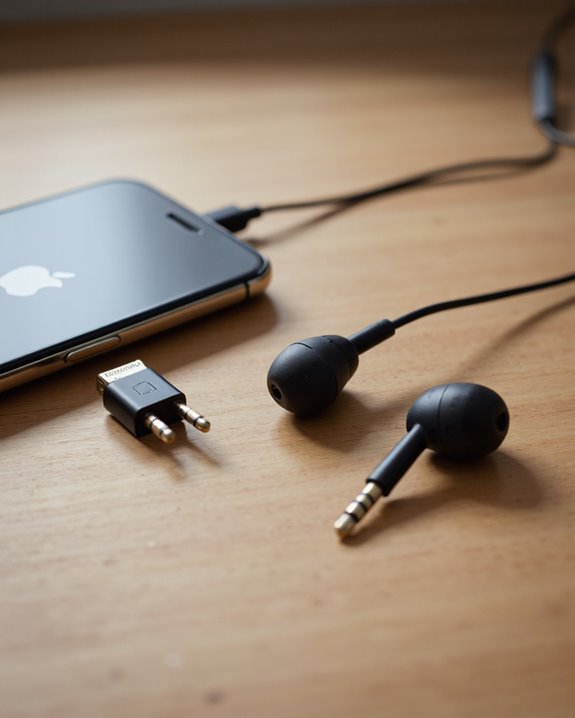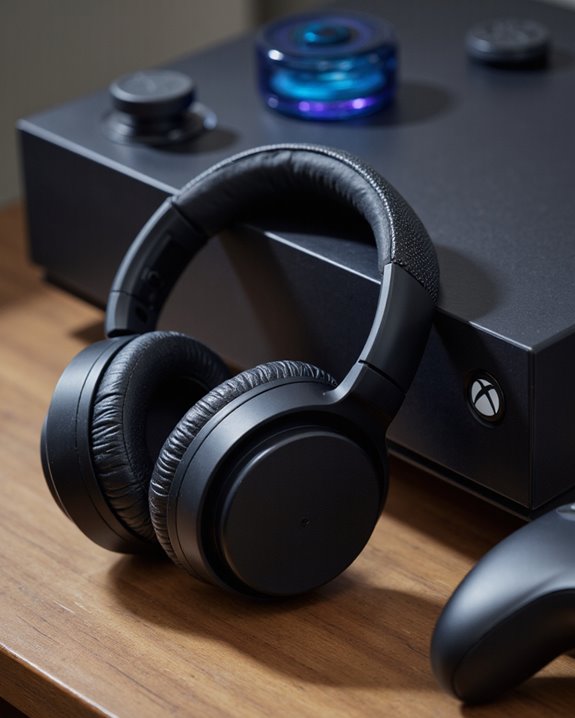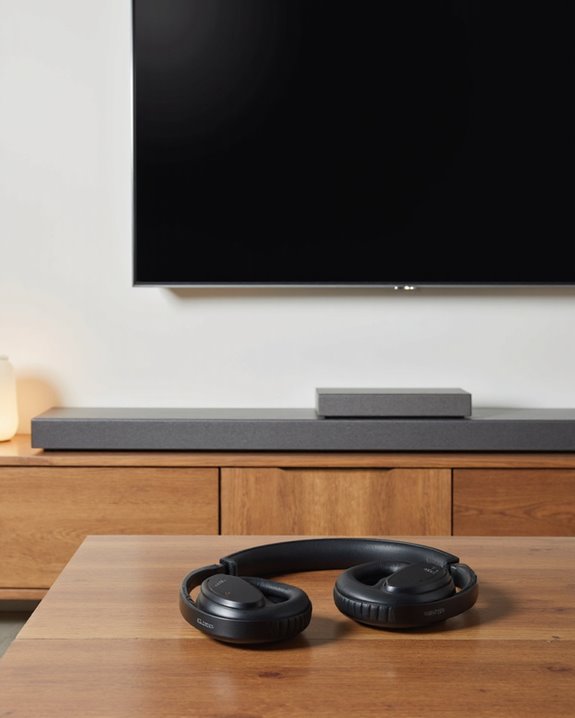As an Amazon Associate, we earn from qualifying purchases. Some links may be affiliate links at no extra cost to you. Although our opinions are based on curated research, we haven't used these products. Articles generated with AI.

Are JBL Headphones Compatible With Iphone?
JBL headphones are fully compatible with iPhones, primarily using Bluetooth connectivity—supported across most JBL WAVE, VIBE, TUNE, LIVE, CLUB, and TOUR models—providing stable wireless performance within a 10-meter range. We simply enter pairing mode on the headphones, activate Bluetooth in the iPhone’s settings, and select our device to connect. While newer iPhones rely exclusively on Bluetooth, some JBL models offer auxiliary input for wired listening if needed. Advanced JBL features like multipoint pairing and EQ customization further enhance integration with Apple devices; further details follow.
Key Takeaways
- Most JBL headphones are fully compatible with iPhones via Bluetooth wireless connection.
- Pairing is simple: activate pairing mode on JBL headphones and select them in the iPhone’s Bluetooth settings.
- Newer iPhones without a headphone jack require wireless Bluetooth connectivity for JBL headphones.
- The JBL Headphones app enhances compatibility by allowing customization and firmware updates.
- For best performance, keep both your JBL headphones and iPhone updated with the latest software.
Overview of JBL Headphones and Iphone Compatibility
Although the landscape of personal audio has shifted dramatically with the removal of the traditional headphone jack from newer iPhone models, JBL headphones continue to offer robust compatibility with Apple’s flagship devices. Most JBL headphones, including popular models from the WAVE, VIBE, TUNE, LIVE, CLUB, and TOUR series, utilize Bluetooth technology, ensuring seamless wireless integration with iPhones. By activating pairing mode on the headphones, we can quickly connect them through the iPhone’s Bluetooth settings, which provides a straightforward setup process. Compatibility is further enhanced by regular software updates on both devices, safeguarding a consistent and high-quality audio experience. As iPhone models evolve, it’s important to verify Bluetooth support in our JBL headphones to maintain peak performance and avoid any connectivity issues. Many top JBL models feature Bluetooth 5.0 connectivity, which supports stable connections and device switching within a 10-meter range.
Connection Methods Between JBL Headphones and Iphone
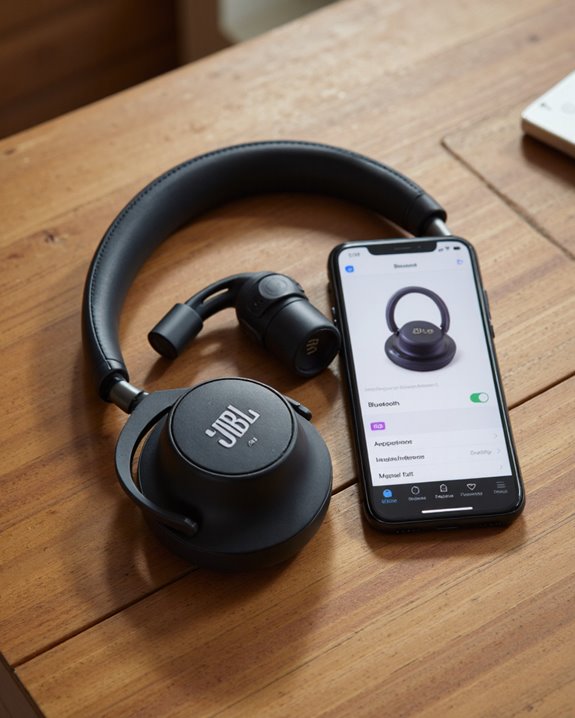
When we’re looking to connect our JBL headphones to an iPhone, we have two primary methods to contemplate: wireless Bluetooth pairing and, for certain models, a traditional wired connection. Most JBL headphones emphasize Bluetooth connectivity, allowing us to enjoy a seamless wireless experience. To establish this connection, we’ll typically initiate pairing mode on the headphones and select them within the iPhone’s Bluetooth settings. This method is essential for newer iPhone models, which no longer include a headphone jack. However, some JBL models still support a wired connection using a 3.5mm auxiliary cable, offering compatibility with older iPhones equipped with this port. It’s important to confirm that our specific headphone model supports the desired connection method to verify peak performance and compatibility with our device.
Step-By-Step Guide to Pairing JBL Headphones With Iphone
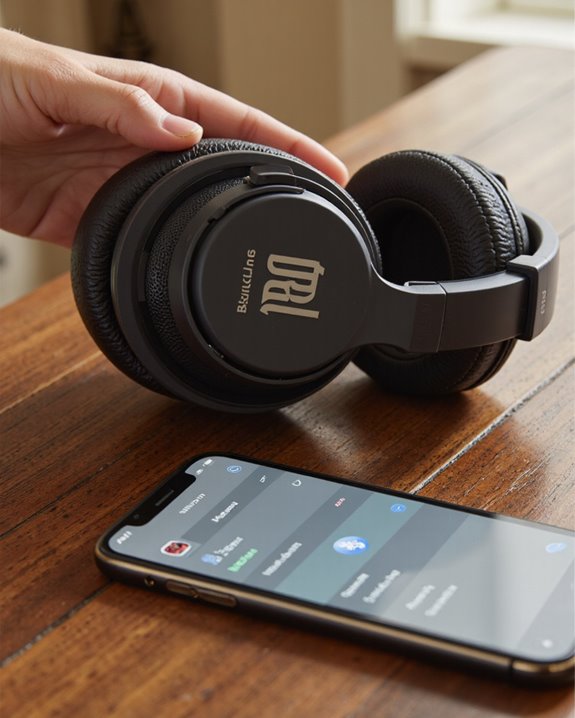
Before we can enjoy wireless audio from our iPhone using JBL headphones, it’s essential to follow a systematic pairing process that guarantees stable connectivity and peak performance. First, make sure that our JBL headphones are powered on and in pairing mode—usually indicated by a rapidly flashing LED light. Next, we’ll open the Settings app on our iPhone, access the Bluetooth menu, and confirm Bluetooth is toggled on. Within the list of available devices, our JBL headphones should appear. Selecting them initiates the connection process. We’ll know the connection is successful when the LED light on the headphones stops flashing and remains steady. If the device doesn’t connect immediately, we may need to reset headphones or toggle Bluetooth before attempting the pairing sequence again.
Common Connectivity Issues and Troubleshooting Tips
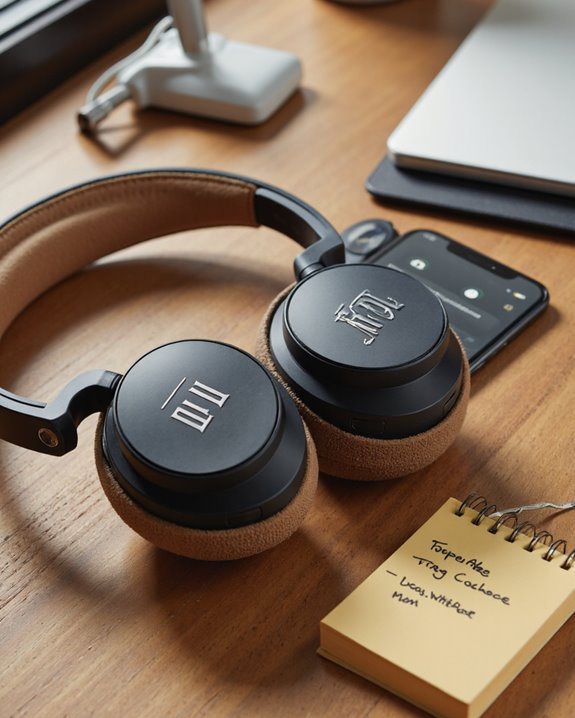
Once we’ve completed the pairing process, reliable connectivity between our JBL headphones and iPhone is typically consistent, but a handful of common issues can disrupt that experience. Bluetooth connectivity problems often arise when attempting to pair, particularly with older JBL or iPhone models. If pairing fails, one effective troubleshooting tip is toggling Bluetooth off and on, or selecting “forget device” and re-pairing. Obstacles—such as walls or electronic interference—can weaken the signal, so maintaining a clear line of sight between the devices is essential for ideal performance. If the iPhone doesn’t recognize the headphones, restarting both devices may resolve the issue. Additionally, ensuring no other device is connected and regularly updating the firmware of both the JBL headphones and iPhone will help maintain compatibility and stability.
Enhancing Your Listening Experience With JBL Headphones
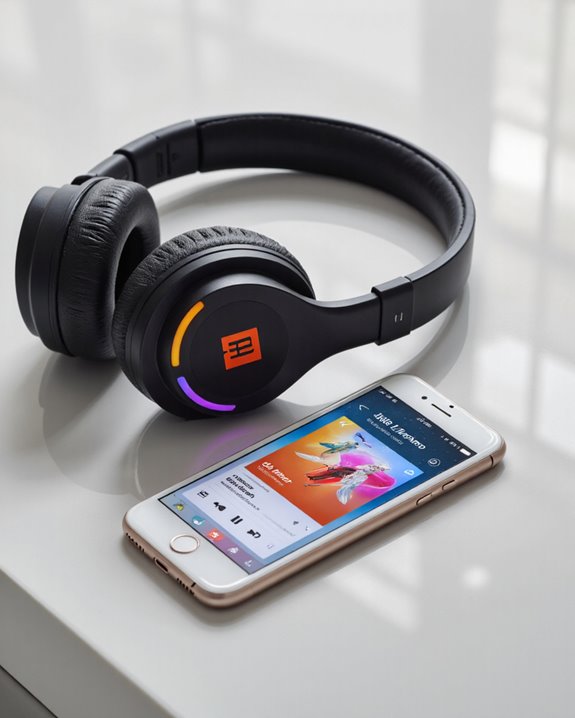
Although JBL headphones are designed for straightforward compatibility with iPhones, there are several advanced features we can leverage to greatly enhance our listening experience. By utilizing the JBL Headphones app, we’re able to customize EQ settings and fine-tune noise-canceling features, tailoring audio performance to our specific tastes and environments. Bluetooth connectivity guarantees seamless audio streaming, free from signal drops or lag, which is essential for uninterrupted music, calls, or media playback. Many headphone models offer both Bluetooth and wired connection options, accommodating various iPhone models, including those without headphone jacks. JBL’s advanced audio technology delivers a rich, immersive listening experience, complementing the iPhone’s superior multimedia capabilities. Altogether, these features allow us to maximize both versatility and sound quality in daily use.
Key Considerations When Choosing JBL Headphones for Iphone

When selecting JBL headphones for use with an iPhone, it’s important we focus on several technical factors that directly impact compatibility and performance. First, since newer iPhone models no longer include a headphone jack, Bluetooth compatibility is vital for seamless audio playback and calls. We should verify that the JBL model supports Bluetooth—most modern options do—while some older models require a 3.5mm aux cable, which may necessitate an adapter. Battery life and playback time are also significant; extended hours per charge guarantee uninterrupted listening sessions. Additionally, checking firmware compatibility helps us avoid connection issues and guarantees peak performance—regular updates can resolve pairing problems. By prioritizing these aspects, we can confidently select the best JBL headphones for our iPhone, maximizing convenience and audio quality. JBL headphones also offer features like multipoint pairing, allowing connection to two devices simultaneously, which enhances usability with iPhones and other devices.
Frequently Asked Questions
Why Won’t My JBL Headphones Connect to My Iphone?
Let’s not beat around the bush—Bluetooth connection issues, headphone pairing problems, or even device compatibility concerns might be causing trouble. We should check battery life, software updates, hardware limitations, and other troubleshooting steps to enhance audio quality and user experience.
Do JBL Headphones Work on Iphone?
We’ve found that JBL features offer excellent iPhone compatibility across various headphone types. Users enjoy wireless convenience, impressive audio quality, long battery life, and sound performance. The pairing process is simple, and user reviews highlight easy troubleshooting tips if needed.
Can I Use JBL With an Iphone?
Let’s not beat around the bush—when it comes to JBL features, iPhone compatibility is a breeze. We enjoy excellent wireless performance, impressive audio quality, long battery life, sleek design aesthetics, comfort level, noise cancellation, app integration, and glowing user reviews.
Will Any Bluetooth Headphones Work With an Iphone?
We can use most Bluetooth headphones with an iPhone thanks to Bluetooth connectivity and device compatibility. Let’s consider audio quality, wireless range, battery life, sound customization, noise cancellation, ear comfort, price comparison, and brand reliability when choosing.

